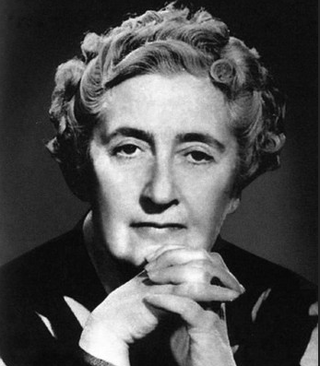
Dame Agatha Mary Clarissa Christie, Lady Mallowan, was a British author known for her 66 detective novels and 14 short story collections, particularly those revolving around fictional detectives Hercule Poirot and Miss Marple. She also wrote the world's longest-running play, the murder mystery The Mousetrap, which has been performed in the West End of London since 1952. A writer during the "Golden Age of Detective Fiction", Christie has been called the "Queen of Crime"—a moniker which is now trademarked by her estate—or the "Queen of Mystery". She also wrote six novels under the pseudonym Mary Westmacott. In 1971, she was made a Dame (DBE) by Queen Elizabeth II for her contributions to literature. Guinness World Records lists Christie as the best-selling fiction writer of all time, her novels having sold more than two billion copies.

Hercule Poirot is a fictional Belgian detective created by British writer Agatha Christie. Poirot is one of Christie's most famous and long-running characters, appearing in 33 novels, two plays, and 51 short stories published between 1920 and 1975.
Miss Jane Marple is a fictional character in Agatha Christie's crime novels and short stories. Miss Marple lives in the village of St Mary Mead and acts as an amateur consulting detective. Often characterised as an elderly spinster, she is one of Christie's best-known characters and has been portrayed numerous times on screen. Her first appearance was in a short story published in The Royal Magazine in December 1927, "The Tuesday Night Club", which later became the first chapter of The Thirteen Problems (1932). Her first appearance in a full-length novel was in The Murder at the Vicarage in 1930, and her last appearance was in Sleeping Murder in 1976.

Murder on the Orient Express is a work of detective fiction by English writer Agatha Christie featuring the Belgian detective Hercule Poirot. It was first published in the United Kingdom by the Collins Crime Club on 1 January 1934. In the United States, it was published on 28 February 1934, under the title of Murder in the Calais Coach, by Dodd, Mead and Company. The UK edition retailed at seven shillings and sixpence (7/6) and the US edition at $2.

The Mysterious Affair at Styles is the first detective novel by British writer Agatha Christie, introducing her fictional detective Hercule Poirot. It was written in the middle of the First World War, in 1916, and first published by John Lane in the United States in October 1920 and in the United Kingdom by The Bodley Head on 21 January 1921.

The A.B.C. Murders is a work of detective fiction by British writer Agatha Christie, featuring her characters Hercule Poirot, Arthur Hastings and Chief Inspector Japp, as they contend with a series of killings by a mysterious murderer known only as "A.B.C.". The book was first published in the UK by the Collins Crime Club on 6 January 1936, sold for seven shillings and sixpence (7/6) while a US edition, published by Dodd, Mead and Company on 14 February of the same year, was priced $2.00.
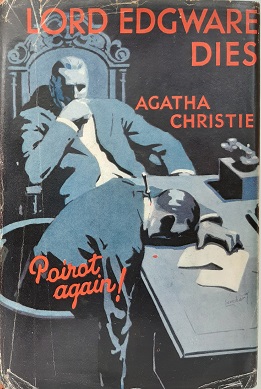
Lord Edgware Dies is a work of detective fiction by British writer Agatha Christie, published in the UK by the Collins Crime Club in September 1933 and in the US by Dodd, Mead and Company later in the same year under the title of Thirteen at Dinner. Before its book publication, the novel was serialised in six issues of The American Magazine as 13 For Dinner.
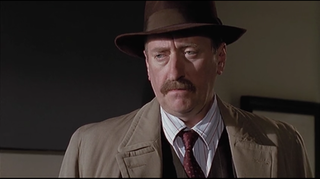
Inspector James Japp is a fictional character who appears in several of Agatha Christie's novels featuring Hercule Poirot.
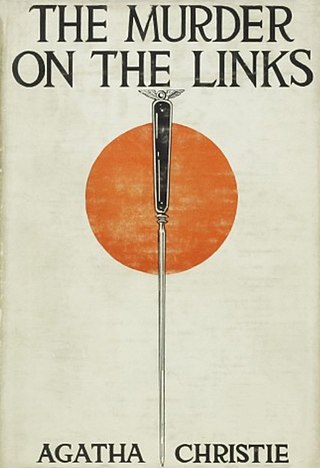
The Murder on the Links is a work of detective fiction by Agatha Christie, first published in the US by Dodd, Mead & Co in March 1923, and in the UK by The Bodley Head in May of the same year. It is the second novel featuring Hercule Poirot and Arthur Hastings. The UK edition retailed at seven shillings and sixpence (7/6), and the US edition at $1.75.

Hallowe'en Party is a work of detective fiction by English writer Agatha Christie, first published in the United Kingdom by the Collins Crime Club in November 1969 and in the United States by Dodd, Mead and Company later in the same year. This book was dedicated to writer P. G. Wodehouse. It has been adapted for television, radio, and most recently for the film A Haunting in Venice (2023).
Ariadne Oliver is a fictional character in the novels of Agatha Christie. She is a crime fiction novelist, the creator of the fictional Finnish detective Sven Hjerson, and a friend of Hercule Poirot.

Peril at End House is a work of detective fiction by British writer Agatha Christie, first published in the US by the Dodd, Mead and Company in February 1932 and in the UK by the Collins Crime Club in March of the same year. The US edition retailed at $2.00 and the UK edition at seven shillings and sixpence (7/6).

Evil Under the Sun is a work of detective fiction by British writer Agatha Christie, first published in the UK by the Collins Crime Club in June 1941 and in the US by Dodd, Mead and Company in October of the same year.
This page details the other fictional characters created by Agatha Christie in her stories about the Belgian detective, Hercule Poirot.
This page details the books featuring the fictional character Hercule Poirot, created by Agatha Christie.
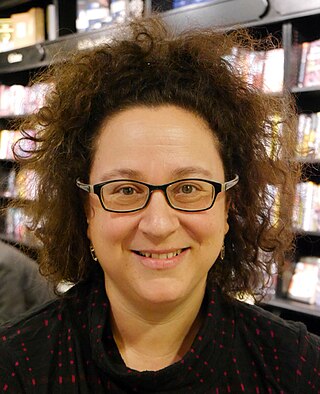
Sophie Hannah is a British poet and novelist.

The Alphabet Murders is a 1965 British detective film directed by Frank Tashlin and starring Tony Randall, Anita Ekberg and Robert Morley. It is based on the 1936 novel The A.B.C. Murders by Agatha Christie.

Closed Casket is a work of detective fiction by British writer Sophie Hannah, featuring Agatha Christie's Hercule Poirot. Hannah is the first author to have been authorised by the Christie estate to write new stories for her characters. Hannah's work closely resembles the Golden Age of Detective Fiction in its structure and tropes. Closed Casket even includes a plan of the house in which the murder takes place; such plans were sometimes used in Golden Age novels to aid the reader in their solving of the mystery puzzle.

The Mystery of Three Quarters is a work of detective fiction by Sophie Hannah. It is the third in her series of Hercule Poirot novels, after being authorised by the estate of Agatha Christie to write new stories for the character. The previous two are The Monogram Murders (2014) and Closed Casket (2016).

The Killings at Kingfisher Hill is a 2020 mystery and detective novel by Sophie Hannah. It is the fourth continuation novel written by Hannah featuring Hercule Poirot, the fictional detective created by Agatha Christie, and Scotland Yard inspector Edward Catchpool, an original character created by Hannah.
















